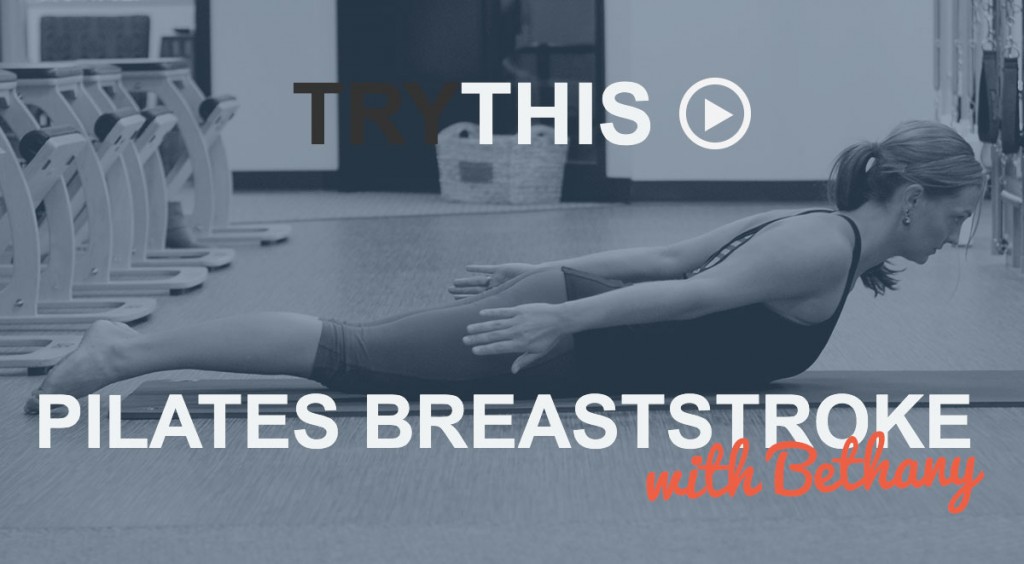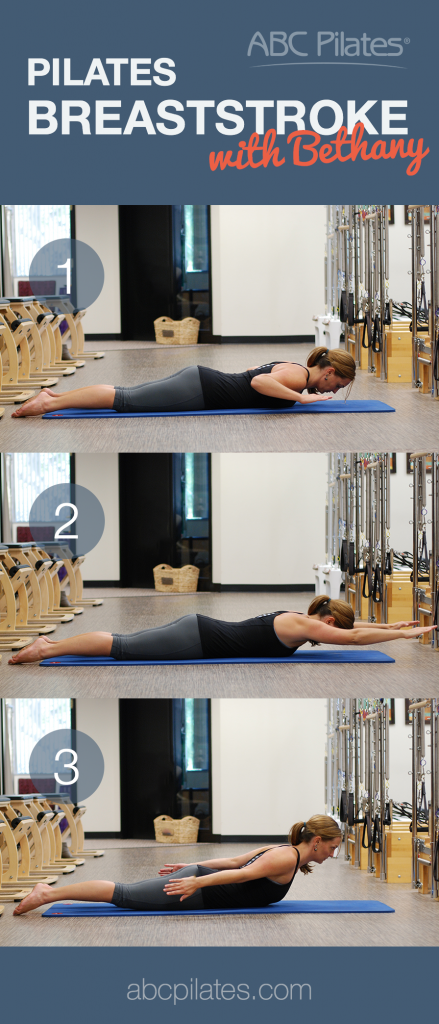
No swim cap necessary
The breaststroke exercise is my absolute favorite Pilates exercise to teach. In fact, if I could pick one exercise from the Pilates repertoire to practice for the rest of my life, this one would be my “main squeeze.”
Here’s why: we are all slouchers. I know, I know, you’ve heard it before—but it’s true! We often initiate movement from the lumbar spine, which really should be more of a stabilizer, instead of the mid to upper back, which is where we should be getting most of our movement from. When our upper back becomes over kyphotic (rounded forward) it becomes both stiff and weak, wreaking havoc on our spine and neck.
The good news is that you can work to correct poor posture and its accompanying pain through Pilates!
Why you need to be doing Pilates Breaststroke
- It challenges your upper and mid-spinal articulation while strengthening spinal extensors and scapular stabilizers—all of which helps to restore the upper back to a neutral alignment.
- It strengthens deep core stabilizers, such as the transversus abdominis and pelvic floor, in order to provide support for the low-back region.
- One of the most compelling benefits of Pilates is that it focuses on the entire body and not just one area; the Pilates Breaststroke is a great example of this “whole body” approach.
How to do the Pilates Breaststroke
On the Mat
Level: Beginner/Intermediate

Step 1
Prone, pelvis and spine neutral. Legs extended and open hip-distance apart, toes gently pointed. Arms bent; hands by shoulders; palms down; scapulae stabilized by drawing shoulder blades slightly together and down towards pelvis.
Step 2
To prepare, inhale and gently draw low abdominals in and up from the mat (I find imagining scorching hot lava under your belly button helps ☺︎)
Exhale – Keep scapulae engaged and reach arms forward, shoulder distance apart with palms down creating a long, low line with the upper body hovering slightly above the mat. Maintain a closed rib cage while lengthening the spine.
Step 3
Inhale – Circle the arms out to sides, then around to hips with palms facing body. Keep scapulae engaged and extend the upper back and neck. Allow rib cage to open, but keep bottom rib in contact with the mat.
Complete 5-8 repetitions, then finish with a child’s pose stretch.
Modification: Place a ball between knees to aid adductor (inner thigh) connection.
Tips for success
- Reach through crown of the head and imagine holding a large apple between the chest and throat to keep cervical spine lengthened and in alignment with the entire body.
- Visualize drawing the scapulae together and down slightly to avoid overworking through the upper traps.
On the Reformer
Level: Advanced
Try the breaststroke on the mat at home to help restore the spine back to its neutral posture and strengthen the entire core. Or, for an added challenge, come see me at the studio and we can tackle it on the reformer together!

